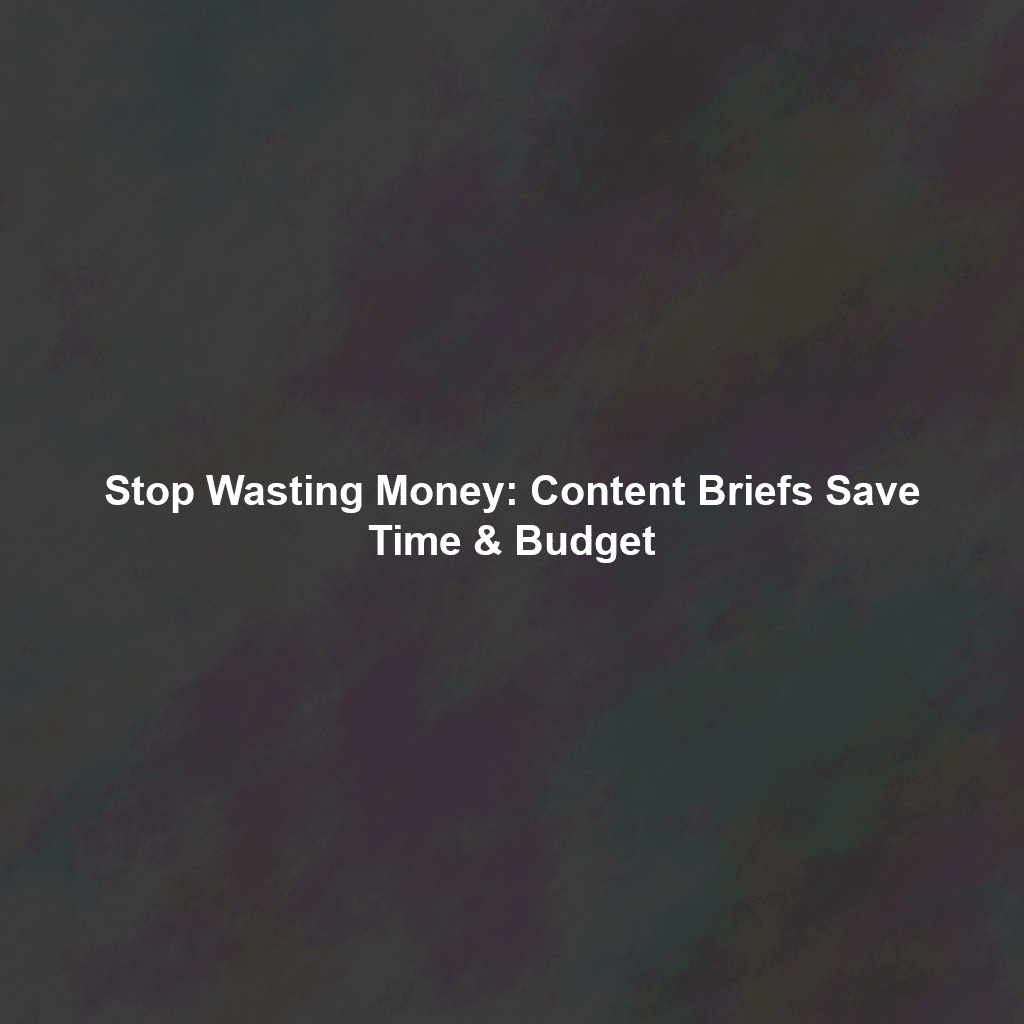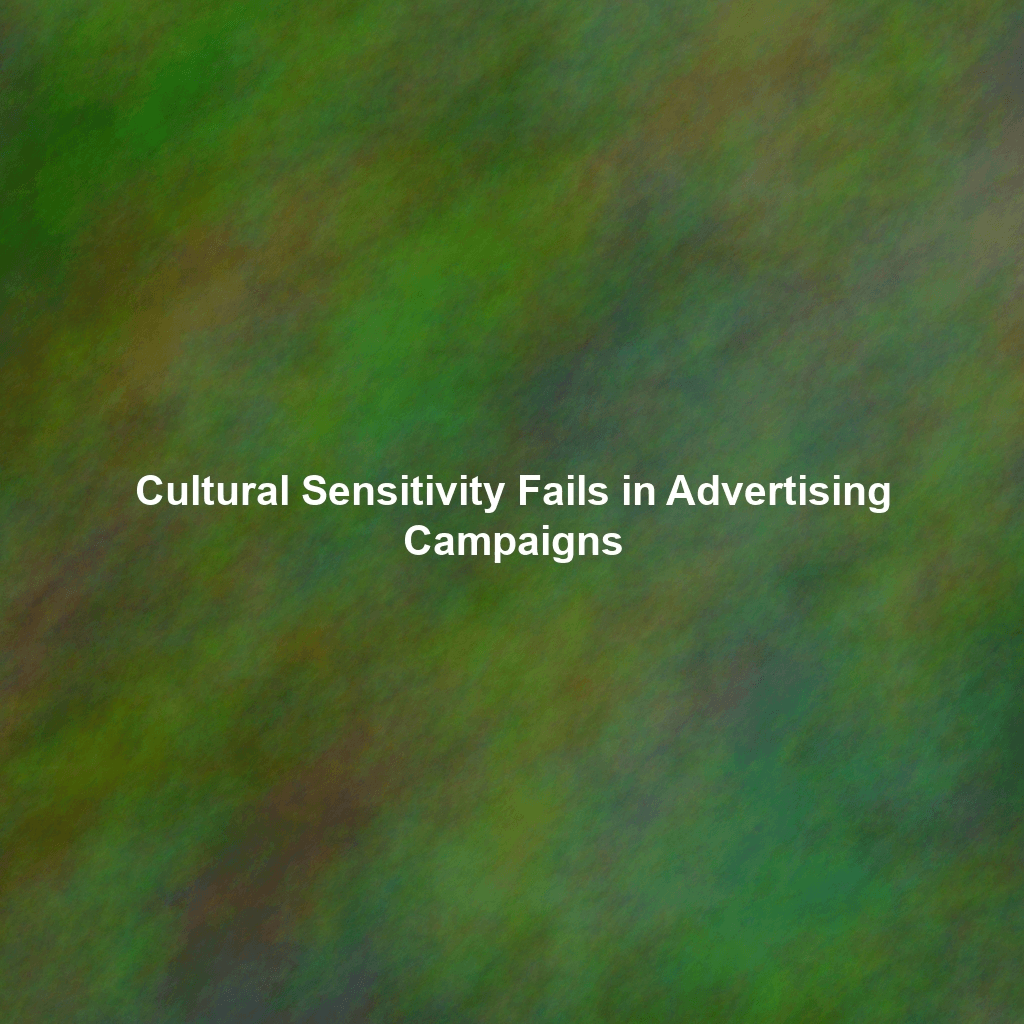We’re constantly striving to create high-quality, engaging content that resonates with our target audience and drives tangible business results. But all too often, content projects devolve into a quagmire of revisions, scope creep, and ultimately, wasted marketing budget. The solution? A meticulously crafted content brief. This article will explore how investing time in upfront planning significantly minimizes these issues, preventing costly mistakes and ensuring your content aligns perfectly with your business objectives.
PS – Our recommended tool for simple, easy-to-read, and affordable content briefs is Brief Buddy.
The Cost of Winging It: A Content Marketing Nightmare
Let’s paint a familiar picture. A content team is tasked with creating a blog post on “The Future of AI in Marketing.” Excitement is high, and writers jump straight into research. After a week of work, a draft is submitted. The feedback? “This isn’t what we envisioned. It’s too technical, doesn’t address our specific audience, and misses key product integrations.” Sound familiar? This scenario, played out in countless organizations, highlights the inherent risk of skipping the crucial step of creating a comprehensive content brief.
Without a clear roadmap, content creators are essentially driving blind. They might produce brilliant prose, but if it doesn’t align with the overall marketing strategy, target audience needs, or brand voice, it’s essentially wasted effort. This translates directly into:
- Rework: Multiple rounds of revisions, eating into valuable time and resources.
- Scope Creep: The project expands beyond its initial parameters, leading to delays and budget overruns.
- Missed Opportunities: Content fails to resonate with the target audience, leading to low engagement and minimal impact on business goals.
- Wasted Spend: Ultimately, the entire content creation investment yields little to no return.
I’ve personally witnessed this firsthand. During my time working with a SaaS company targeting small business owners, we launched a series of blog posts without proper briefs. The writers, while talented, often missed the mark. One particular post about cybersecurity was filled with jargon and technical details that completely flew over the heads of our audience. Engagement was abysmal, and we ended up pulling the post after just a few weeks. The wasted time, money, and the potential damage to our brand were significant. That experience solidified my belief in the power of the content brief.
Key Insight: Skipping the content brief is like embarking on a road trip without a map. You might get somewhere eventually, but it’s unlikely to be your intended destination, and you’ll probably waste a lot of time and gas along the way.
The Anatomy of a Killer Content Brief
A well-crafted content brief serves as the North Star for your content project. It provides a clear and concise overview of the project’s goals, target audience, key messages, and desired outcomes. Think of it as a blueprint that ensures everyone involved – writers, editors, designers, and marketers – is on the same page from the outset. But what exactly goes into creating a truly effective content brief?
1. Project Overview & Goals
Start by outlining the fundamental purpose of the content piece. What problem are you trying to solve? What message are you trying to convey? What specific business goals does this content support? Be as explicit as possible.
Example:
Topic: “5 Ways to Improve Your Website’s Conversion Rate”
Goal: To generate qualified leads for our website optimization services. We want readers to understand the importance of conversion rate optimization and see our company as a trusted partner in achieving their business goals.
Business Objective: Increase the number of inbound leads by 15% in Q3 2024.
2. Target Audience
Defining your target audience is paramount. Who are you trying to reach with this content? What are their pain points, interests, and motivations? What questions are they asking? Creating detailed buyer personas can be incredibly helpful in this process. Don’t just say “small business owners.” Specify the industry, company size, job titles, and specific challenges they face. This level of detail will empower the writer to tailor their content to resonate directly with the intended audience.
Example:
Target Audience: Marketing managers at small to medium-sized e-commerce businesses (revenue between $500k – $5M annually). They are typically responsible for driving online sales and are constantly looking for ways to improve their website’s performance. They are familiar with basic marketing concepts but may lack deep technical expertise in areas like A/B testing or website analytics. They are often budget-conscious and prioritize solutions that offer a high return on investment.
Pain Points: Struggling to convert website visitors into paying customers. Overwhelmed by the complexity of website analytics. Limited budget for marketing initiatives.
3. Keywords & SEO Strategy
Search engine optimization is crucial for ensuring your content reaches the right audience. Identify the primary and secondary keywords that you want to target with your content. Conduct keyword research to understand the search volume and competition for these keywords. Specify the desired search intent (informational, navigational, transactional) and ensure that the content is optimized accordingly.
Example:
Primary Keyword: “website conversion optimization”
Secondary Keywords: “increase website conversion rate,” “improve website conversion,” “conversion rate optimization tips”
Search Intent: Informational, navigational (targeting users who are researching CRO and potentially looking for CRO services).
SEO Notes: Include relevant internal links to our website optimization services page. Optimize the title tag, meta description, and header tags for the primary keyword.
Consider using tools like Google Keyword Planner (https://ads.google.com/home/tools/keyword-planner/) or Semrush (https://www.semrush.com/) for keyword research.
4. Content Outline & Structure
Provide a detailed outline of the content’s structure, including headings, subheadings, and key points. This helps ensure that the content is well-organized, logical, and easy to read. It also helps to guide the writer and prevent them from straying from the intended topic. Think about the user experience and how the content will flow from one section to the next.
Example:
I. Introduction
- Briefly explain what conversion rate optimization is and why it’s important.
- Highlight the common challenges that businesses face when trying to improve their conversion rates.
- Tease the 5 actionable tips that will be covered in the article.
II. Tip 1: Optimize Your Website’s Design
- Discuss the importance of a clean, user-friendly design.
- Provide specific examples of design elements that can impact conversion rates (e.g., clear call-to-actions, mobile responsiveness, fast loading speeds).
- Include before-and-after examples of website design improvements.
III. Tip 2: Improve Your Call-to-Actions
- Explain how to write compelling and persuasive call-to-actions.
- Provide examples of effective call-to-action phrases.
- Discuss the importance of A/B testing different call-to-actions.
IV. Tip 3: Streamline Your Checkout Process
- Highlight the common pain points in the checkout process that can lead to cart abandonment.
- Provide tips for simplifying the checkout process (e.g., reducing the number of steps, offering multiple payment options, providing clear shipping information).
V. Tip 4: Leverage Social Proof
- Explain the power of social proof in influencing purchasing decisions.
- Provide examples of different types of social proof (e.g., customer testimonials, reviews, case studies).
- Discuss how to effectively incorporate social proof into your website.
VI. Tip 5: Use Live Chat to Engage Visitors
- Explain how live chat can help answer visitor questions and address their concerns in real-time.
- Provide tips for using live chat effectively (e.g., being proactive, providing helpful and informative responses, using a friendly and professional tone).
VII. Conclusion
- Summarize the 5 key tips for improving website conversion rates.
- Reiterate the importance of conversion rate optimization.
- Include a call-to-action encouraging readers to learn more about our website optimization services.
5. Style & Tone
Consistency in brand voice and style is essential. Specify the desired tone (e.g., formal, informal, humorous, authoritative) and provide examples of existing content that exemplifies the desired style. Include any specific brand guidelines or style guides that the writer should follow.
Example:
Tone: Informative, helpful, and slightly informal. We want to sound like a trusted advisor, not a corporate drone. Avoid jargon and technical terms whenever possible. Use clear and concise language.
Style: Follow our brand style guide (link to style guide). Pay attention to grammar, punctuation, and spelling. Use active voice and short sentences.
Examples: Refer to these blog posts for examples of our desired tone and style (link to examples).
6. Call to Action (CTA)
What do you want the reader to do after they finish reading the content? Specify the desired call to action and provide clear instructions on how to implement it. Make sure the CTA is aligned with the overall goals of the content piece.
Example:
Call to Action: Encourage readers to request a free website audit.
Instructions: Include a prominent call-to-action button at the end of the article that links to our website audit request form. Use persuasive language that highlights the benefits of a website audit (e.g., “Discover Hidden Opportunities to Boost Your Conversion Rate – Request a Free Website Audit Today!”).
7. Resources & References
Provide the writer with any relevant resources or references that they can use to research the topic. This can include links to articles, blog posts, industry reports, or internal documents. This ensures that the content is accurate, credible, and well-supported.
Example:
Resources:
- HubSpot’s Guide to Conversion Rate Optimization: https://blog.hubspot.com/marketing/conversion-rate-optimization
- Neil Patel’s Advanced Guide to Conversion Rate Optimization: https://neilpatel.com/blog/conversion-rate-optimization/
- Our internal case studies on website optimization (access through company intranet).
Key Insight: A comprehensive content brief is an investment, not an expense. It’s a small price to pay for avoiding the costly consequences of rework, scope creep, and wasted content spend.
Real-World ROI: Data-Driven Success with Content Briefs
The benefits of using content briefs are not just anecdotal; they’re backed by data. Studies have shown that companies that use content briefs experience a significant reduction in rework and a substantial increase in content effectiveness.
For example, a case study by a leading content marketing agency revealed that clients who used detailed content briefs saw a 40% reduction in the number of revisions required and a 30% increase in organic traffic to their content. These numbers speak volumes about the power of upfront planning.
Consider another scenario: a financial services company implemented a new content strategy that included mandatory content briefs for all blog posts. Prior to the implementation, the average blog post required three rounds of revisions and took approximately two weeks to complete. After implementing content briefs, the average blog post required only one round of revisions and took approximately one week to complete. This resulted in a significant reduction in content creation time and cost.
My own experience aligns with these findings. When I implemented mandatory content briefs across a team of freelance writers, I saw a dramatic improvement in the quality and consistency of their work. Rework was reduced by at least 50%, and the time it took to get a piece of content ready for publication was significantly shorter. The initial investment in creating the briefs was quickly recouped through increased efficiency and reduced costs.
Addressing Common Objections to Content Briefs
Despite the overwhelming evidence supporting the use of content briefs, some marketers still resist the practice. Here are some common objections and how to address them:
- “Content briefs take too much time to create.” While it’s true that creating a detailed content brief requires an upfront investment of time, the time saved in rework and revisions far outweighs the initial effort. Think of it as paying a little now to avoid paying a lot later.
- “Our writers are experienced and know what they’re doing. They don’t need a brief.” Even the most experienced writers benefit from a clear and concise brief. It ensures that they are aligned with the overall marketing strategy and that their content is targeted to the right audience. A brief provides context, clarifies expectations, and helps to prevent misunderstandings.
- “Content briefs stifle creativity.” A well-crafted content brief doesn’t stifle creativity; it focuses it. It provides a framework within which writers can exercise their creativity and produce compelling content that aligns with business goals. It allows writers to focus on the quality of their writing, rather than trying to guess what the client wants.
- “We don’t have time to create content briefs for every piece of content.” Start by creating content briefs for your most important or complex content projects. As you see the benefits, you can gradually expand the use of content briefs to other types of content. You can also create templates to streamline the process.
Key Insight: The best content briefs are living documents that evolve as the project progresses. Don’t be afraid to update the brief based on new information or insights.
Best Practices for Creating Effective Content Briefs
Creating a great content brief isn’t just about ticking off boxes; it’s about understanding the purpose and creating a document that truly empowers your content creators. Here are some best practices to keep in mind:
- Be Specific and Concise: Avoid vague language and ambiguous instructions. Use clear and concise language that is easy to understand.
- Focus on the “Why”: Explain the rationale behind each element of the brief. Why is this topic important? Why is this audience being targeted? Why is this call to action being used? Understanding the “why” will help writers create more compelling and effective content.
- Involve Stakeholders: Collaborate with key stakeholders to gather input and ensure that the brief reflects their needs and expectations. This can include marketing managers, sales representatives, product managers, and subject matter experts.
- Use Visuals: Incorporate visuals into your content briefs to make them more engaging and easier to understand. This can include images, charts, graphs, and mockups.
- Keep it Accessible: Ensure that the content brief is easily accessible to everyone involved in the project. Store it in a central location where it can be easily retrieved and updated.
- Review and Iterate: Regularly review and iterate on your content brief process to identify areas for improvement. Solicit feedback from writers and other stakeholders to refine your approach.
Tools and Templates to Streamline the Process
Creating content briefs doesn’t have to be a daunting task. There are a number of tools and templates available that can help you streamline the process and create high-quality briefs quickly and efficiently.
- Google Docs/Microsoft Word: Simple and readily available, these tools are great for creating basic content briefs. You can easily collaborate with others and track revisions.
- Content Management Systems (CMS): Some CMS platforms, such as WordPress, offer plugins or extensions that allow you to create and manage content briefs directly within the CMS.
- Project Management Tools: Tools like Asana, Trello, and Monday.com can be used to manage content projects and track the progress of content briefs.
- Content Brief Templates: Numerous content brief templates are available online for free or for a small fee. These templates provide a starting point for creating your own briefs and can save you a significant amount of time.
For example, HubSpot offers a free content brief template that you can download and customize (https://www.hubspot.com/marketing/content-brief-template). This template includes all of the essential elements of a content brief and can be easily adapted to fit your specific needs.
You can also find a range of templates by searching “content brief template” on Google.
The Future of Content Briefs: AI-Powered Assistance
The future of content briefs is likely to be heavily influenced by artificial intelligence (AI). AI-powered tools are already being developed to automate various aspects of the content brief creation process, such as keyword research, topic ideation, and audience analysis.
These tools can analyze vast amounts of data to identify the most relevant keywords, trending topics, and audience interests. They can also generate content outlines, suggest potential headlines, and provide insights into the competitive landscape.
While AI will undoubtedly play a significant role in the future of content briefs, it’s important to remember that human input will still be essential. AI can provide valuable insights and automate repetitive tasks, but it cannot replace the creativity, empathy, and strategic thinking that humans bring to the table. The most effective content briefs will be those that combine the power of AI with the human touch.
Conclusion: Embrace the Power of Planning
In the fast-paced world of content marketing, it’s easy to get caught up in the rush to produce content quickly. However, taking the time to create a comprehensive content brief is an investment that will pay dividends in the long run. By providing clear guidance, aligning expectations, and reducing rework, content briefs can help you create more effective content, save time and money, and achieve your business goals.
Don’t let your content projects descend into chaos. Embrace the power of planning and make content briefs an integral part of your content creation process. Your team, your budget, and your audience will thank you for it.
This article was optimized and published by Content Hurricane.
 Skip to content
Skip to content

